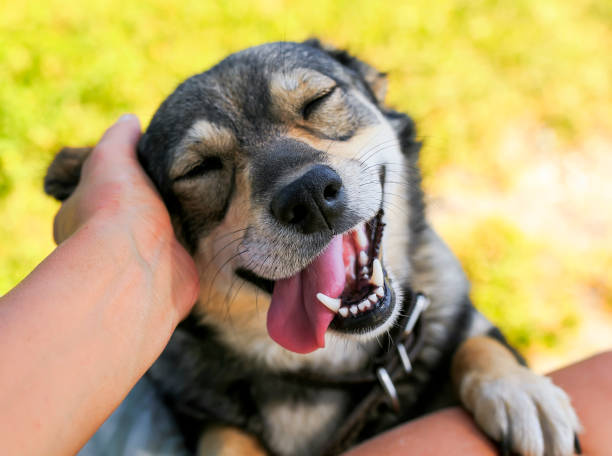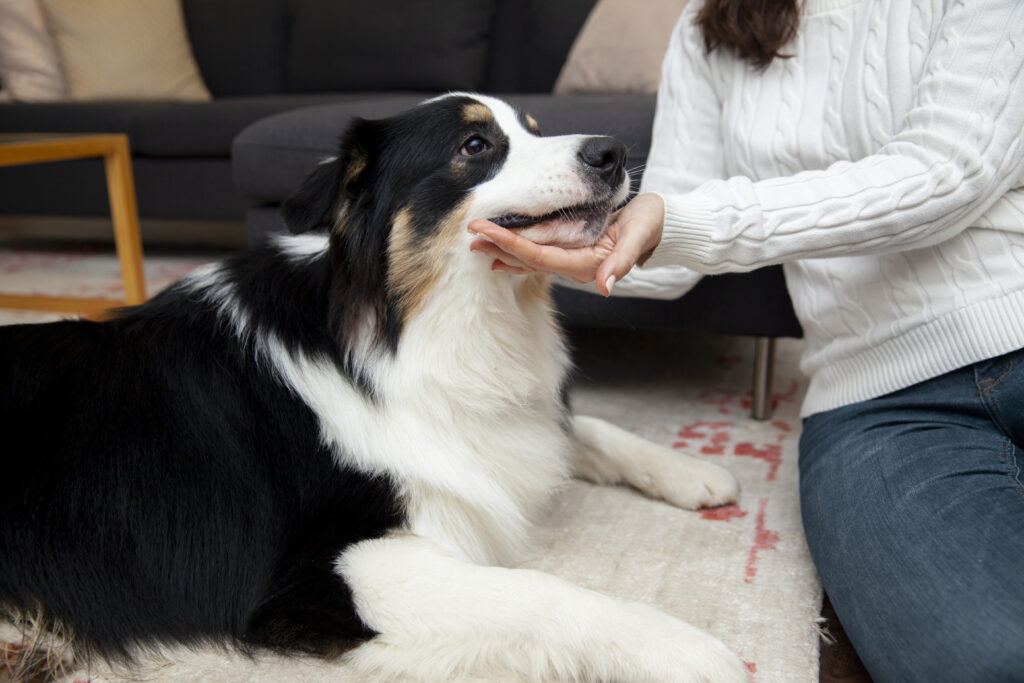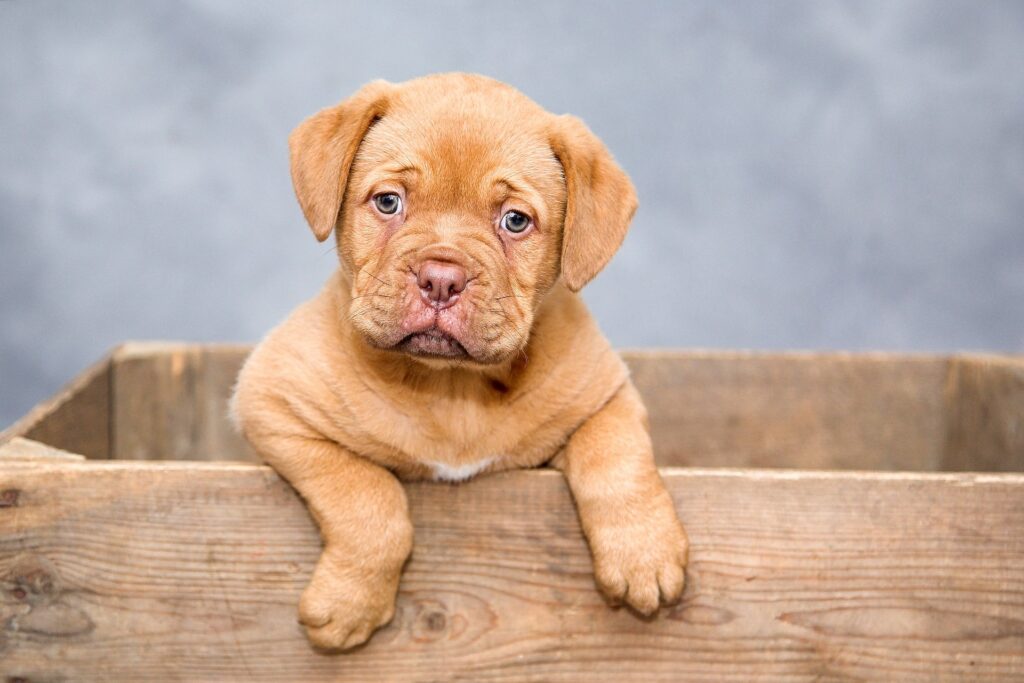
Our furry friends are like little furry children, and just like us, they can get a little out of sorts after a trip to the groomer. So, if you’ve noticed your pup sitting around more than usual after getting a haircut, bath, and nail trim, you might be wondering why.
Don’t worry, there’s usually nothing to be seriously concerned about. In this article, we’ll explore the different reasons why your dog might be sitting more after a grooming session, and how you can help them feel comfortable again. We’ll also cover some tips on how to make grooming a positive experience for your dog from the start, including finding a good groomer and making sure the sessions are short and sweet.
Why Does My Dog Keep Sitting After Grooming?
There are a couple of main reasons why your dog might be sitting more than usual after a grooming session:
- Discomfort: Grooming can sometimes be a bit uncomfortable for dogs, especially if they aren’t used to it. The process of bathing, brushing, and trimming fur can be tiring, and some dogs might find the noise of clippers or dryers scary.
- Exhaustion: A good grooming session can be a lot of work for a dog! All that standing, being brushed, and having their nails trimmed can wear them out. So it’s perfectly normal for them to want to take a break and rest afterwards.
Also Read: 07 Reasons Why Do Dogs Shake Their Head After Grooming: Expert Insights
Common Reasons for Excessive Sitting After Grooming
While sitting is usually normal, if your dog seems excessively lethargic or uncomfortable after grooming, there could be another reason. Here are a few things to look out for:
- Skin Irritation: New shampoos, conditioners, or even cologne used by the groomer might irritate your dog’s skin. This can make them itchy and uncomfortable, and they might sit and lick themselves to try and soothe the itch.
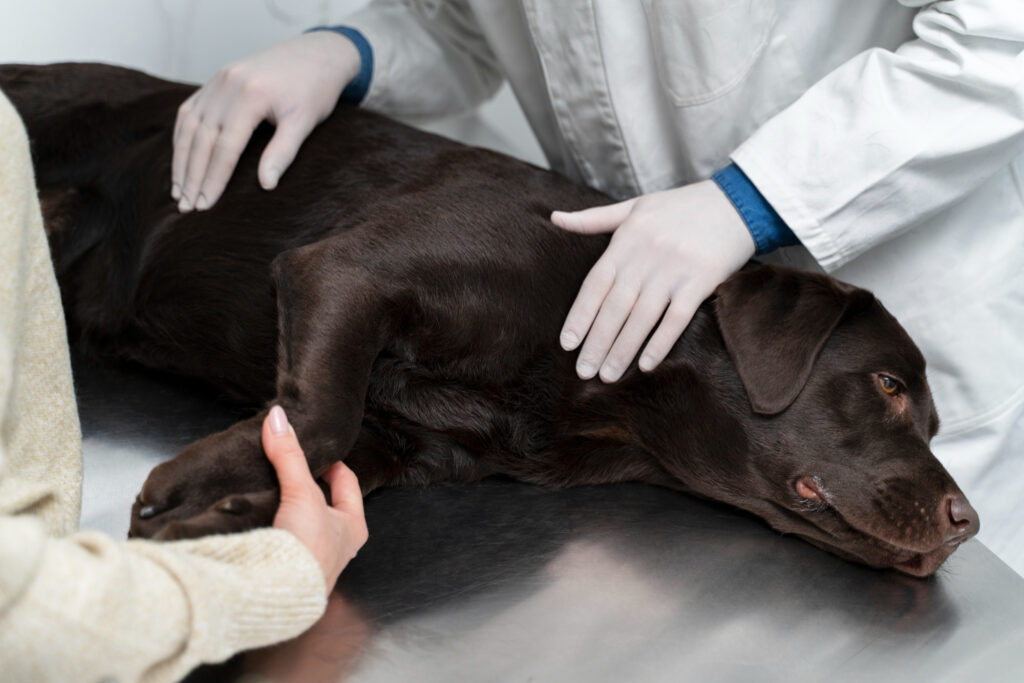
- Cuts or Nicks: Sometimes, nicks or cuts can happen during grooming, especially if your dog is wiggly or anxious. These might not be immediately noticeable, but they can be painful for your dog.
- Anal Gland Issues: Some groomers will express your dog’s anal glands during a grooming session. This can cause some temporary discomfort, and your dog might scoot or sit more often to try and relieve the irritation.
- Stress and Anxiety: Not all dogs enjoy going to the groomer. The new sights, sounds, and smells can be stressful for some pups. This stress can manifest itself in different ways, including lethargy and excessive sitting.
- Underlying Medical Conditions: In some cases, excessive sitting after grooming could be a sign of an underlying medical condition, such as arthritis or joint pain.
Tips To Help Your Dog Feel Better After Grooming
If you’re concerned about your dog’s excessive sitting after grooming, there are a few things you can do to help them feel better:
- Inspect Your Dog: Gently check your dog’s skin for any signs of redness, irritation, or cuts. You should also look around their rear end to see if their anal glands seem swollen or irritated.
- Soothing Bath: If you think your dog’s skin might be irritated, you can give them a soothing bath with a gentle oatmeal shampoo. Oatmeal shampoo is known for its calming and moisturizing properties https://www.amazon.com/Pet-MD-Oatmeal-Shampoo-Moisturizer/dp/B0180A1FNM.
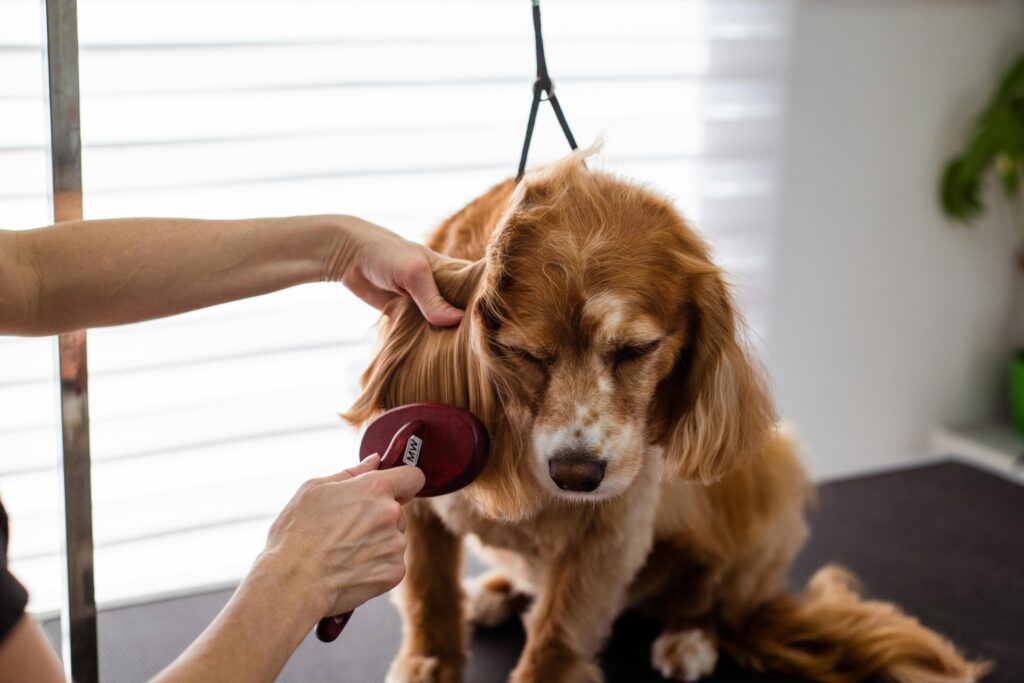
- Comfy Spot: Provide your dog with a comfy bed or blanket to rest in after their grooming session. This will help them feel safe and secure.
- Lots of Water: Make sure your dog has plenty of fresh water to drink after their grooming session. Grooming can be dehydrating, so it’s important to replenish their fluids.
- Cuddles and Love: Sometimes the best medicine is a good cuddle and some love from their favorite person (that’s you!).
When to See a Vet?
If your dog’s excessive sitting is accompanied by other symptoms, such as:
- Loss of appetite
- Lethargy
- Vomiting
- Diarrhea
- Licking or scratching excessively
Then you should take them to the vet to rule out any underlying medical conditions.
Tips to Make Grooming a Positive Experience
Here are some tips to help make grooming a positive experience for your dog from the start:
- Get Your Dog Used to Being Touched: Start by getting your dog used to having their paws, ears, and tail handled. This will make the grooming process go much smoother.
- Find a Reputable Groomer: Ask your friends, family, or veterinarian for recommendations for a good groomer in your area. Choose a groomer who is experienced with dogs and who has a gentle touch.
- Start Early: If you’re introducing your dog to grooming for the first time, start with short grooming sessions when your dog is a puppy. This will help them get used to the process and make it less stressful for them in the long run.
- Positive Reinforcement: Use positive reinforcement techniques during grooming sessions. This means rewarding your dog with treats, praise, or petting for good behavior.
- Keep it Short and Sweet: If your dog gets anxious during grooming, don’t try to do too much at once. Shorter, more frequent grooming sessions are better than one long, stressful session.
- Be Patient: It takes time for some dogs to get used to grooming. Be patient with your dog and don’t get discouraged if they don’t love it right away.
- Home Grooming: If your dog is very stressed by going to the groomer, you might consider grooming them at home yourself. There are plenty of resources available online and in pet stores to help you learn how to groom your dog at home [ wikihow grooming dog ON wikihow.com].
Final Thoughts
There are many reasons why your dog might be sitting more than usual after a grooming session. In most cases, it’s simply because they’re tired or a little uncomfortable from the experience.
However, if your dog seems excessively lethargic, itchy, or in pain, then it’s important to rule out any underlying medical conditions. By following the tips in this article, you can help make grooming a positive experience for your dog and keep them happy and healthy.
Here are some additional resources that you might find helpful:
- American Kennel Club: Dog Grooming https://www.akc.org/products-services/akc-safe-grooming-program/
- Association of Professional Dog Groomers https://www.facebook.com/APPGA.org/
Remember, the most important thing is to pay attention to your dog’s individual needs and make sure they feel comfortable and safe during the grooming process. With a little patience and positive reinforcement, you can help your dog look and feel their best!
FAQs: Why Does My Dog Keep Sitting After Grooming?
Q: My dog seems really tired after grooming. Is this normal?
A: Absolutely! Grooming can be a workout for your pup. The bathing, drying, brushing, and haircutting take a lot of energy. So, it’s perfectly normal for them to want to relax and rest afterward. Think of it like a spa day for your furry friend!
Q: My dog keeps scooting his butt after grooming. Did the groomer do something wrong?
A: There are a couple of possibilities. Sometimes, anal glands can become irritated during grooming, especially if they are expressed. This can cause scooting. Additionally, some dogs might be sensitive to the grooming products used, leading to itchiness and discomfort.
Q: My dog seems self-conscious after getting a haircut. Is this possible?
A: Believe it or not, some dogs can feel strange after a haircut! They might not recognize themselves with shorter fur or a different style. This can lead to them feeling a little insecure and wanting to sit or hide for a while.
Q: Could my dog’s collar be making him uncomfortable after grooming?
A: It’s possible. During grooming, the groomer might have adjusted the collar for bathing or brushing. Make sure the collar isn’t too tight now. A snug fit is ideal, but you should be able to comfortably slip two fingers between the collar and your dog’s neck.
Q: My dog seems to be licking his paws after grooming. Did he get hurt?
A: While less common, sometimes clipper blades can irritate a dog’s skin, causing what’s called clipper burn. This can lead to licking or chewing at the irritated areas. If you notice this, contact your veterinarian.
Q: My dog usually loves car rides, but he whined all the way home from the groomer. Is he mad at me?
A: Not necessarily mad, but maybe a little stressed. The grooming process can be overwhelming for some dogs, especially if they’re not used to it. The unfamiliar environment, loud noises, and handling by strangers can all contribute to anxiety.
Q: My dog is acting lethargic and seems to be in pain after grooming. Should I be worried?
A: In rare cases, there could be an underlying medical issue causing your dog’s discomfort after grooming. If your dog is exhibiting lethargy, pain, excessive licking, or other concerning behaviors, consult your veterinarian to rule out any health problems.
Q: My dog usually pulls on the leash, but after grooming, he won’t budge. What’s going on?
A: This could be related to the discomfort we discussed earlier. If your dog is itchy or sore, they might be less interested in walking. It could also be due to stress or feeling overwhelmed by the new experience.
Q: Does age or breed play a role in how my dog reacts after grooming?
A: Absolutely! Older dogs or those with less tolerance for handling might be more likely to feel tired or stressed after grooming. Some breeds are more sensitive than others and might require a gentler approach.
Q: How can I make grooming trips less stressful for my dog?
A: There are a few things you can do! Get your dog used to grooming early on with positive reinforcement. Brush them regularly at home to familiarize them with the feeling. Choose a groomer who is experienced with dogs and uses gentle techniques. Talk to your veterinarian about any concerns you have, and let the groomer know about your dog’s temperament beforehand.
